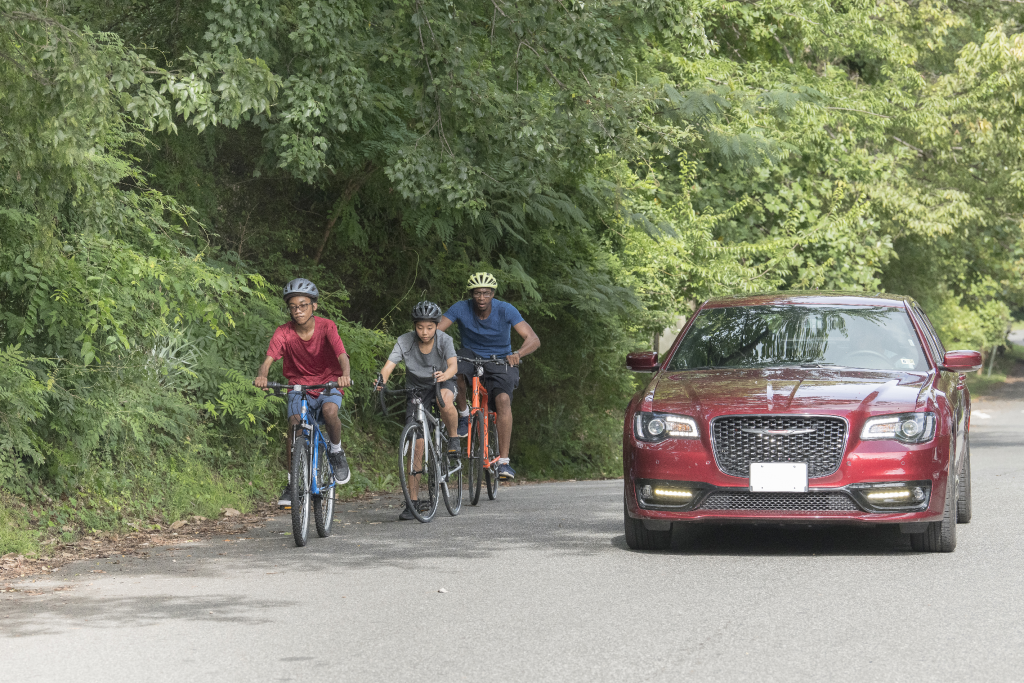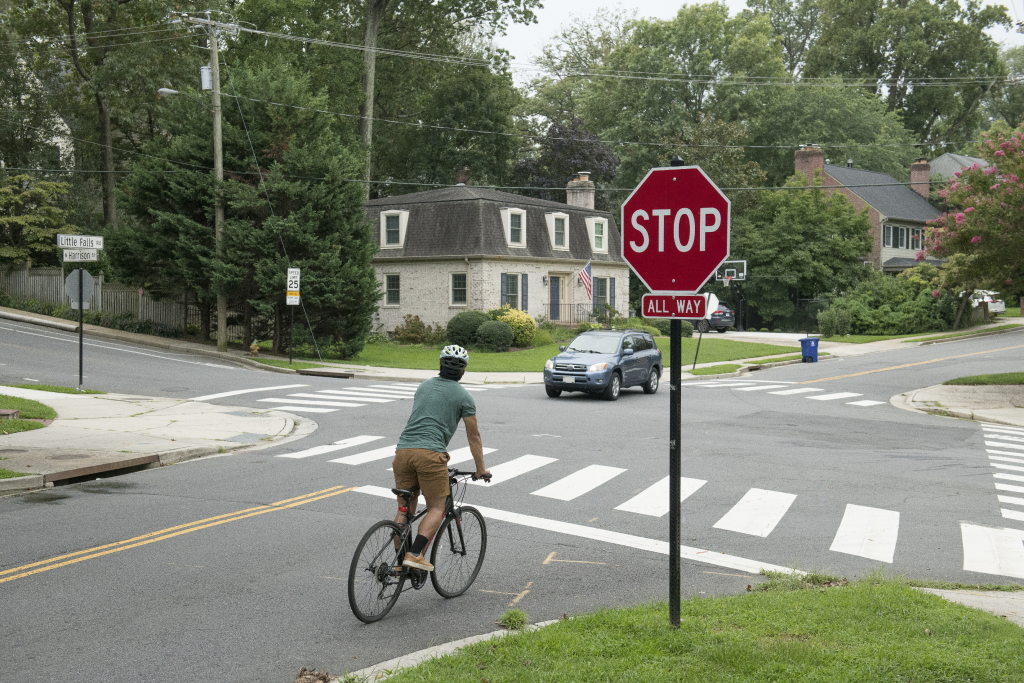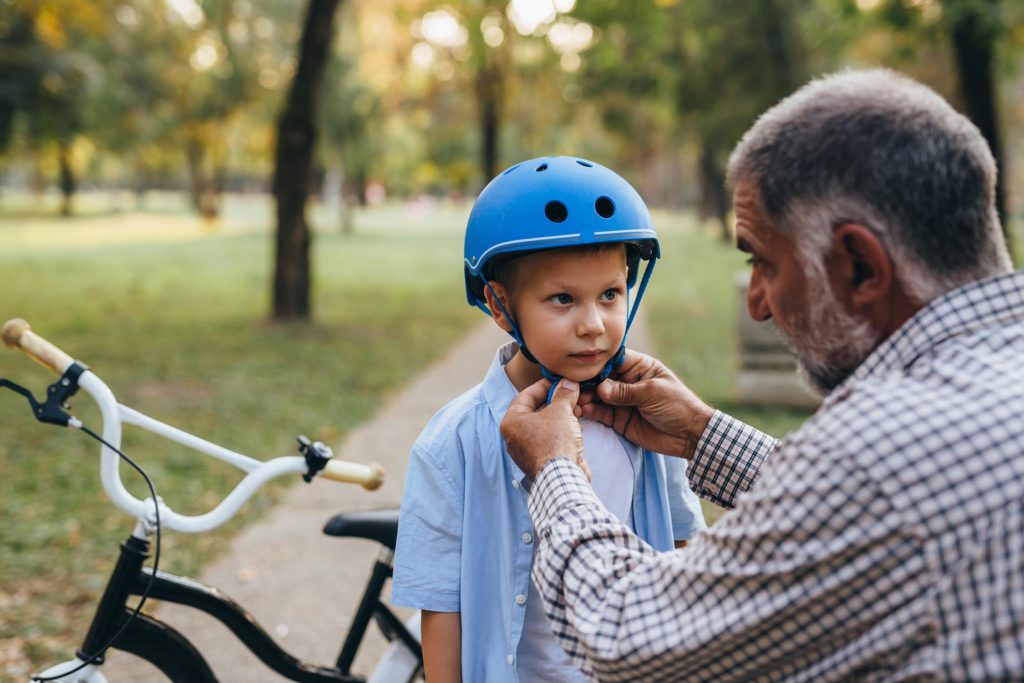As road users, bicyclists are an essential part of the transportation system, and their safety is a top priority. From children riding to school to older adults staying active and healthy, everyone deserves to be safe on our roads. Bicycles are considered vehicles, which means bicyclists are required to follow the same rules of the road as drivers, and drivers should treat them as they would other vehicles.
Traffic safety is a shared responsibility.

Vehicle drivers play an essential role in ensuring bicyclists’ safety and should always be aware of bicyclists. When driving, look out for bicyclists, never drive distracted, and look left-right-left and behind when turning right on red. If you see a bicyclist, maintain a safe distance, always giving them enough room on the road, being careful not to pass too closely, and look left-right-left and behind when turning right on red.
Bicyclists are harder to see in traffic because of their smaller size. To make it easier for drivers to see you, have reflectors and lights on your bike, and wear retroreflective and bright clothing. Always ride your bike in the same direction as traffic, and obey street signs, signals, and road markings, just like a vehicle. Never text, listen to music, or do anything that can distract you from keeping your eyes, ears, and concentration on the road and traffic

- Tips for Bicyclists — Before Heading Out
- Ride a correctly fitting bicycle. It is difficult to control a bike if it is not the right size.
- In addition to a properly fitting bike helmet, a bicyclist should wear bright clothing during the day and reflective gear at night to make them more visible on the road.
- Affix a white front light and red rear light and reflectors to the bicycle for nighttime riding or when visibility is poor.
- It is best to avoid riding on the sidewalk, but if that is the only option, bicyclists should check their state’s law to make sure it is legal.
- Tips for Bicyclists — On the Road
- Drive in the same direction as traffic. Obey street signs, signals, and road markings.
- Do not drive distracted. Keep eyes, ears, and focus on the road and traffic.
- Watch for pedestrians and pass them with care by first announcing “on your left/right” or by using a bell. Bicyclists should ride in the same direction as traffic.
- When crossing a street, slow down and look for traffic (left-right-left and behind). Be prepared to stop, follow traffic signals, and never assume drivers will see the bicyclist.

- TIPP: Ready to Ride – Bicycle Safety Tips: Flyer highlights the following:
- Equipment: Bicycle and Helmet,
- Rules of the Road,
- Be Safe – Be Seen
- Tips to Properly Fit a Bike Helmet
- Measure the head to find the right helmet size.
- Position the helmet correctly on the head
- Use sizing pads/universal fit ring to adjust the fit of the helmet.
- Adjust the side straps.
- Adjust and secure the chin strap.
- Test the fit of the helmet.
Fitting a Bike: When it comes to picking a bike, you need to make sure it is the right size for you. Be sure that your feet reach the pedals while seated and your hands can easily grip the brakes when you need to slow or stop. This will give you better control of the bike, ensuring a safer ride. (NHTSA)

Choosing a Bicycle Helmet: Look for the label that shows the helmet meets the U.S. Consumer Product Safety Commission bicycle standard for safety. When correctly used, helmets meeting this standard can protect against skull fractures and severe brain injuries. (NHTSA)
Fitting a Bicycle Helmet: Wearing a properly fitted bicycle helmet can prevent serious injuries. (NHTSA)
Pre-Ride Safety Check: Every time you ride your bike, do a quick A-B-C check, and take a test ride to make sure your bike is working, and its parts are in good shape. Riding an unsafe bicycle can lead to a crash and injuries. A safe ride starts with a safe bike – and a helmet. (NHTSA)
